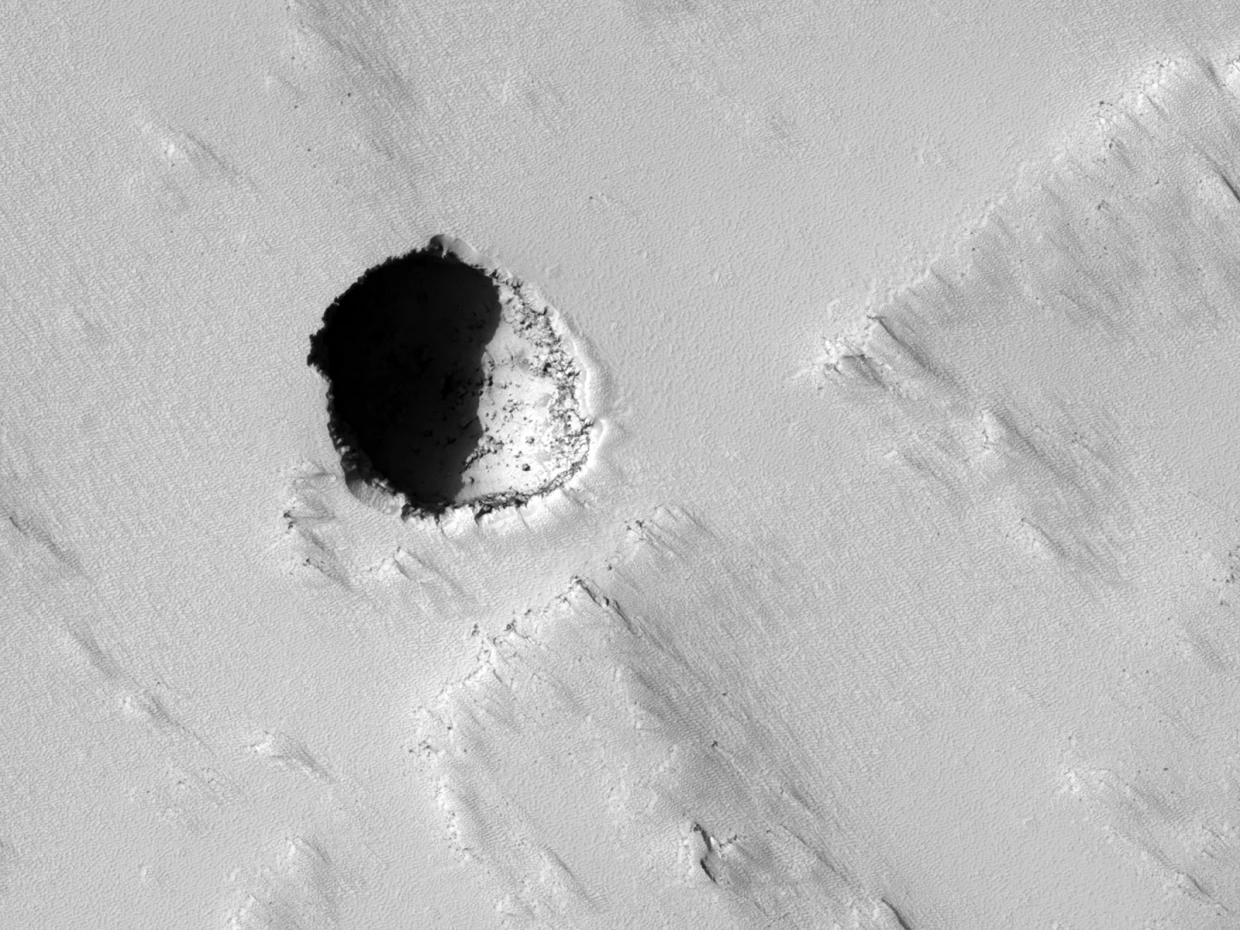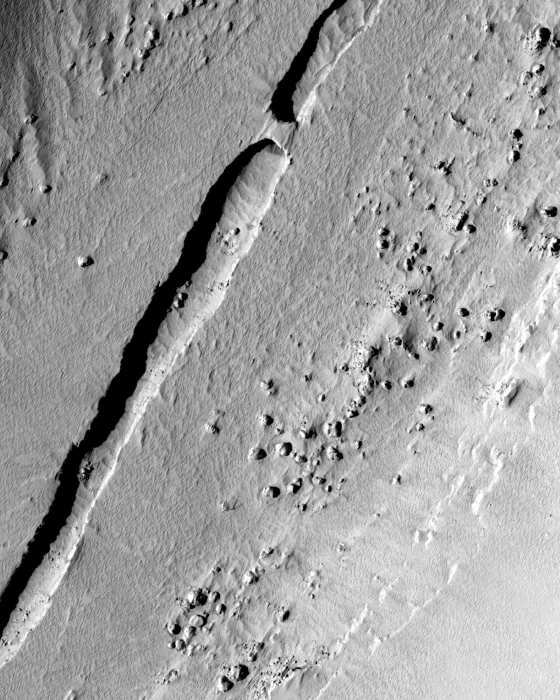
There’s a reason Mars looks the way it does. Lacking a thick atmosphere and a protective magnetic field, its surface faces daily radiation assaults, about 900 times more intense than on Earth. But there’s a glimmer of hope. New studies have revealed that Martian caves might act as natural shields, protecting against this relentless radiation. This discovery could pave the way for future settlements and robotic missions searching for extraterrestrial life.
A radiation challenge and a cave solution
Venturing into space is no small feat. While the last decade has seen remarkable strides in space exploration, the thought of settling on Mars brings its own set of challenges. Unless we’re thinking of a one-way ticket with no return, there are many obstacles to address.
There’s no shortage of environmental hazards out to kill any astronaut bold enough to dare set foot on Mars. With Mars having only 0.7% of Earth’s sea-level pressure, humans would need to don a full pressure suit or remain in a specialized chamber. Without these precautions, oxygen wouldn’t circulate in the bloodstream, leading to potentially fatal consequences.
Radiation, however, remains the primary concern. Although Mars is farther from the Sun than Earth, the absence of a magnetic field and its thin atmosphere mean it’s exposed to radiation levels much higher than Earth. The Mars Odyssey probe has shown radiation levels on Mars to be at least 2.5 times higher than what astronauts face on the International Space Station. Furthermore, besides regular exposure to cosmic rays and solar wind, it receives occasional, lethal radiation blasts due to strong solar flares.
Any attempt to colonize the Red Planet will require measures to ensure radiation exposure is kept to a minimum. Some of the proposed ideas thus far involve habitats built directly into the ground or even above-ground habitats using inflatable modules encased in ceramics.
To establish a lasting presence on the Red Planet, we need innovative solutions to minimize radiation exposure. While some suggest building habitats underground or using ceramics-encased modules, a promising alternative lies in Mars’s natural landscape. The planet is scattered with deep pits, caves, and lava tube structures. Recent research led by Daniel Viúdez-Moreiras at Spain’s National Institute for Aerospace Technology reveals these caverns could be a game-changer for human settlers.
“Caves and their entrances have been proposed as habitable environments and regions that could have preserved evidence of life, mostly due to their natural shielding from the damaging ionizing and non-ionizing radiation present on the surface. However, no studies to date have quantitatively determined the shielding offered by these voids on Mars,” the researchers wrote in the journal Icarus.

According to their findings, cave entrances on Mars dramatically reduce the levels of UV radiation. In some cases, the radiation inside these caverns is only about 2% of the surface levels. This significant reduction could mean that these cave entrances might be capable of sheltering not just humans, but also the plants we’d need for sustenance.
“Numerical simulations of cave entrances show a reduction even more than two orders of magnitude in UV radiation, both in the maximum instantaneous and cumulative doses, throughout the year and at any location of the planet,” the researchers found.
However, there’s still uncertainty about how these caves shield against ionizing radiation, which is linked to cancer.
“Ionizing radiation doesn’t present exactly the same behavior as UV radiation,” Viúdez-Moreiras. told New Scientist. “However, it is expected that ionizing radiation will also be strongly attenuated in pit craters and cave skylights.”

Cave exploration would push technological boundaries. Robots designed for this purpose would have to rely heavily on their own decision-making abilities. Cave walls would hinder communication with Earth which is why the machines would have to be completely autonomous. The robots would need to become explorers in their own right, mapping their surroundings in darkness and navigating through rocky tunnels. And entering these caves? It could be through a skylight or perhaps a descent much like a spider on a tether.
Could we find life in Martian caves?
In 2009, researchers led by Dr. Armando Azua-Bustos, a scientist at the Department of Planetology and Habitability Center of Astrobiology (CSIC-INTA) in Madrid, made an astonishing discovery in the Mars-like Atacama Desert. They found Cyanidium red algae formed biofilms in seemingly inhospitable coastal caves where there is little light, but just enough it seems to support life. If life can persist in Earth’s driest place, who’s to say it can’t in similar Martian environments?
High-resolution surface imaging data recorded over the past couple of decades by instruments like the Mars Reconnaissance Orbiter Context Camera system (CTX), together with Mars Odyssey’s thermal emission imaging system (THEMIS), suggest that the Tharsis bulge may be the best region for cave candidates on Mars. More than 1,000 suitable caves have been identified in this region, which also contains three enormous shield volcanoes, Arsia Mons, Pavonis Mons, and Ascraeus Mons.
Imagine a future where “Tharsis City” becomes the first human settlement on the Red Planet. It’s a name you might want to remember.


